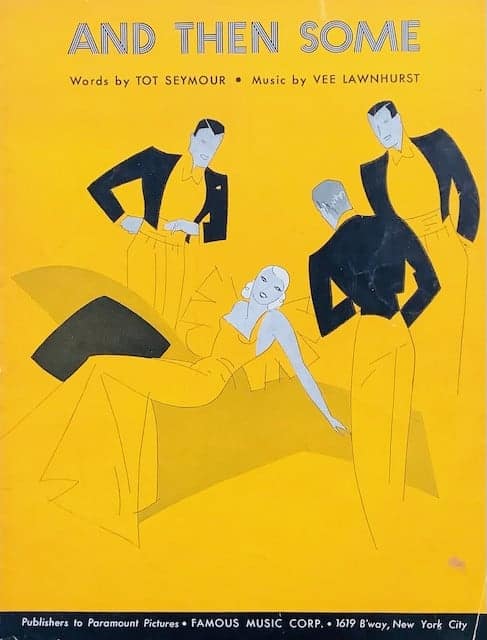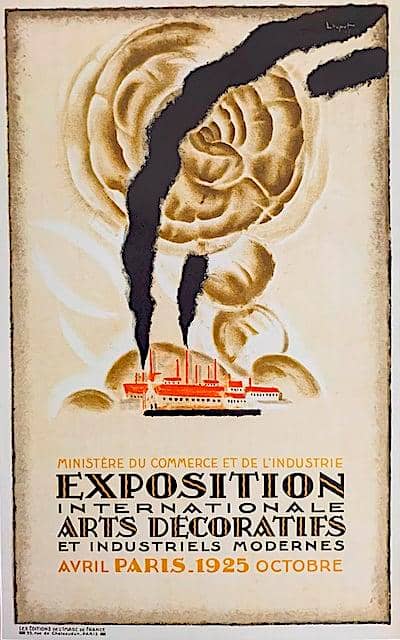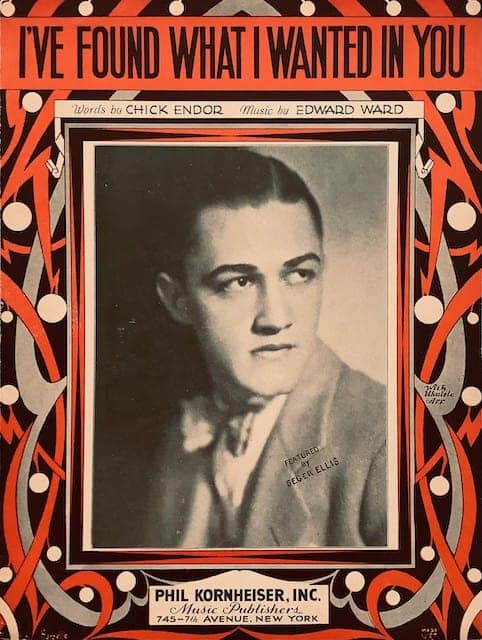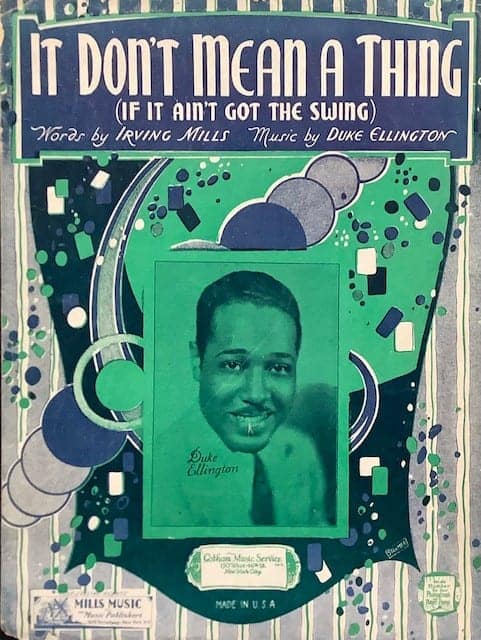Art Deco Sheet Music
from the 1920s & 1930s

The decorative style we call Art Deco was the confluence of several European design styles developed in the 1910s which by the 1920s had become the predominate style in Europe, the United States, Japan, and other parts of the world. It strove for simplicity, and was a reaction against the busy, ornate style of its predecessor, Art Nouveau. While Art Nouveau was seen as a style of the rich, Art Deco emphasized its links to the “common man.”
The term “Art Deco” came from an exposition of arts decoratifs held in Paris in 1925. But even without its formal name, this new, modern style had already begun its influence on both the art and commercial worlds. It came to define the best design work in architecture, furniture, lamps, jewelry, fashion, movie sets, automobiles, trains, ships, posters, advertisements, and, of course, labels on 78 rpm records.

Even lowly sheet music was influenced by it. From the early 1920s to the late 1930s the clean designs of Art Deco, coupled with the use of striking colors and the use of simple cartoon-like figures, made Art Deco-designed sheet music covers jump out at the buyers. Aesthetically, many of these Art Deco covers represented some of the best designs of the period. This was the case, only if the commercial artist understood the advantages, as well as limitations of the Art Deco style. Some covers became a mishmash of Art Deco and other styles.
Art Deco, in general, evolved over time, and the application of the style to sheet music covers evolved in tandem. The advent of the Great Depression in 1929, seemed to have marked a distinct shift in style and tastes. In the 1920s the mood of the country was upbeat and adventurous. As the Great Depression dragged through the 1930s the country became reflective, moody, and somber. Sheet music covers in the 1920s often used bold colors, such as yellows, oranges, and reds. By the 1930s, however, colors become more muted and shifted to greens, blues, and purples. The hard, straight design lines of the 1920s gave way to a more curving style in the 1930s.
The Art Deco era is generally deemed to have lasted into the early 1950s. But by the end of the 1930s, the application of Art Deco style to sheet music covers was already in the decline, to be replaced by a style that could best be described as a “lack of style.”
Even in its heyday, Art Deco-styled sheet music covers were never numerically dominant in the sheet music field. But they were the most memorable and attractive. You may agree.

Sheet Music from the 1920s

Art Deco Sheet Music from the 1930s
Note: All sheet music is from the Bowman collection.

